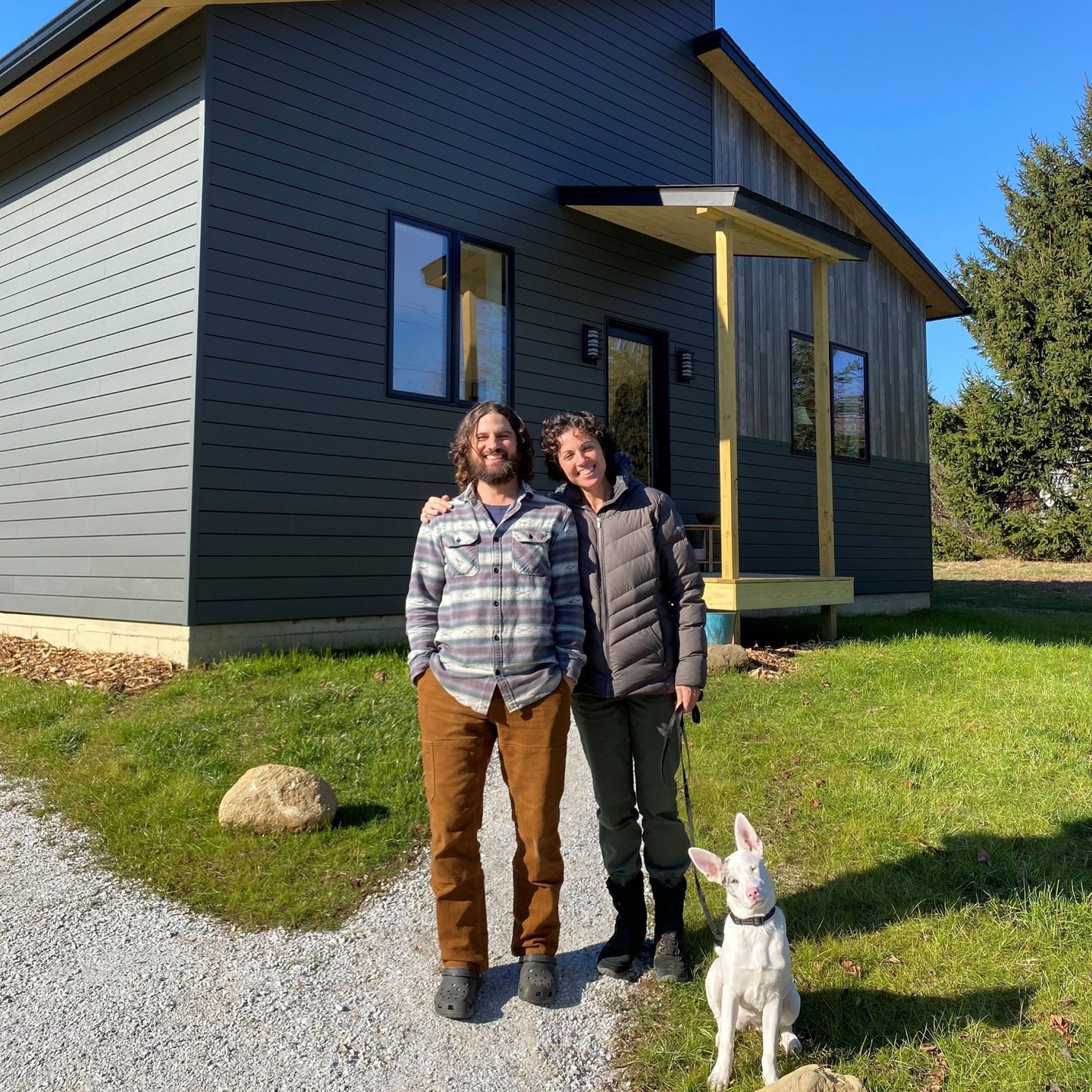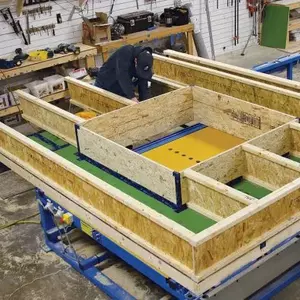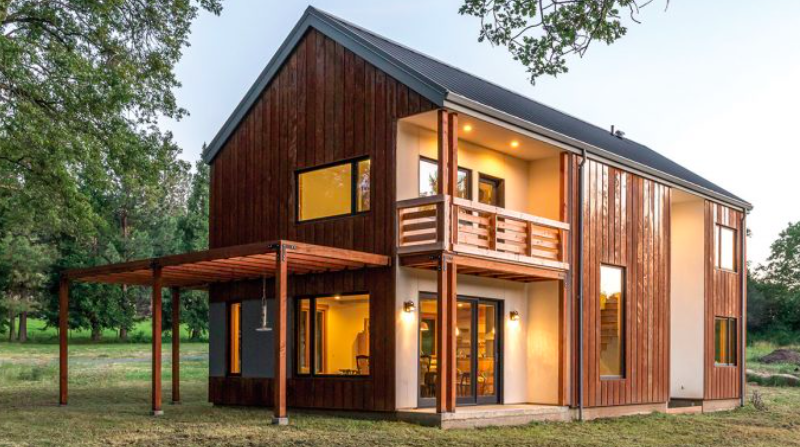
Image Credit: Ken McCown
Following up on the latest from the Green Architects’ Lounge, in which Phil and Chris covered off-site construction and it’s place in high-performance home building, last week’s BS* + Beer Show was a discussion of panelized wall construction with Tedd Benson of Bensonwood, Unity Homes, and Tektonics; David Schleicher of Prairie Design Build; and Barry Price of Barry Price Architecture. Enjoy the show!
The next show is April 30, 6 to 7:30 pm: Making the Most of Minisplits with Jordan Goldman, engineering principal at Zero Energy Design, Krisof Irwin, principal at Positive Energy, and Jacob Staub, cofounder and chief innovation officer at Ripcord Engineering. Watch GBA and FHB newsletters and social media this week for more information on how to tune in live.
Brian Pontolilo is a former editor at Fine Homebuilding magazine and Green Building Advisor.
Weekly Newsletter
Get building science and energy efficiency advice, plus special offers, in your inbox.















11 Comments
One thing that they seemed to skirt around is the bang/$. I'd been looking into panelized construction. I was all for having more consistency in the result, faster construction onsite, and in theory at least able to do it cheaper (being able to mechanize and automate more of the process should in theory allow for a greater rate of manufacture than doing it onsite). But when I started looking at the costs, it would end up almost being around double the traditional solution (with what I'd call 'middle of the road' efficiency improvements in the traditional solution-- so not code minimum, but not passive house either). It just doesn't seem competitive right now (at least in this area -- maybe other parts of the country it's different). While I'm sure there's people that are both willing and able to pay that premium, there's far more people that can't. Even if they scale their ambitions down substantially, it's still seems like it's going to be hard to afford to go the panelized route.
HI user-7681268.
I've heard similar comments from a few architects and builders from all around the country over the years. When they have had a project where some level of factory construction would have made sense for a project, they still couldn't make the budget work.
We just got pricing for a current Passive House project. The cost of the panelization was about 10% more. Overall, we assume the additional cost will save in other ways besides just cost, more control over the quality, etc. This is for a high-end job, so we are talking $600k compared to $700k not including the material price for the windows, but including the installation. Yes this is more expensive, but maybe once the industry increases in scale and when comparing apples to apples, I would like to hope it eventually makes economic sense.
Hi Kyle.
I'm sure your right about scale and I also think cost comparisons are probably not apples-to-apples but are probably just about getting the homeowner the best price with somewhat similar looking specs. Clearly there are some smart builders working on this, so I'm also encouraged that panelized construction gains some more momentum. We'll see...
A couple of random and unrelated thoughts on panelization:
Widespread adoption of panelization, like the mechanization of any industry requires a restructuring the the way the whole industry operates. Construction is very cyclical, and the small players often move from place to place, and alter the type of work they take on, depending on whether they are in a boom or bust cycle. If more of the construction industry are working in factory situations, adapting to economic cycles is going to be a lot harder. Especially, as unlike similar engineered factory products, panelized houses are still expected to produce bespoke designs, rather than a few common ones the way car manufacturers do.
Part of the resistance to panelization is that it takes the control of major construction assemblies away from the builder. Until now the only elements where a similar thing occurs have been engineered trusses, and smaller components and equipment (like windows and HVAC). Allowing an outside company to have control over the structure and control layers of a house is a big leap of faith for designers and builders. The spotty track record of SIPs, which were the first to attempt this, hasn't helped.
I guess production builders won't start to implement panelized construction until they get better at pouring concrete slabs. ;)
I'm a manufacturing-minded mechanical engineer, and I love the concept of panelization/modules. It's a great way to control processes, conserve materials, recycle materials, and for some, make buildings more efficient.
I did some cost-studies comparing site-built and panelized versions of a personal building, and I think many of the additional costs are tough for some to work around. If the buildings are simple, and relatively straightforward to build, then panelization may not make sense.
Since the processes are so different, as well as materials, I think a different approach is needed to compare costs and results. I think it has it's place in the future, but like most things, it's going to take the U.S building industry forever to come around.
I have similar thoughts, and especially agree with "a different approach is needed to compare costs." I come from an automotive background, and it killed us to see Purchasing chase the lowest piece price, while not properly accounting for the costs of poor quality, reliability, logistics, safety, lead time, packaging, etc. Learning to properly account for overall costs is a huge step forward for any company.
I hope that panelization continues to gain traction, and that some of the companies hire some Operational Excellence people to help improve their safety, quality, delivery, and cost.
I continue to watch panelization but as an architect living in Vermont and working with super smart builders, We can easily leverage our strengths to out compete panelization on cost (and waste!) But for projects not in my immediate local and with builders I don't know, this can be a good option.
An excellent point on working with a builder you don't know and one who doesn't know how to execute the details of a passive house. Once they do a couple of penalized builds, maybe they could get similar quality on site-built projects.
My thoughts exactly - There is great training potential for builders who have been doing same old same old for decades but are open to high performance building and are not sure where to start. We are trying to tackle that need a bit with PrettyGoodHouse. But I run into that "I don't know where to start" attitude a lot. With architects too. Also, the cost of panelized is probably only high at this point because the cost of the production facility has to be built in.
Log in or create an account to post a comment.
Sign up Log in